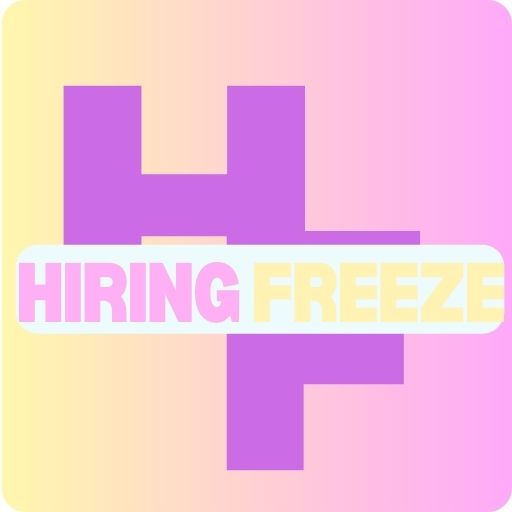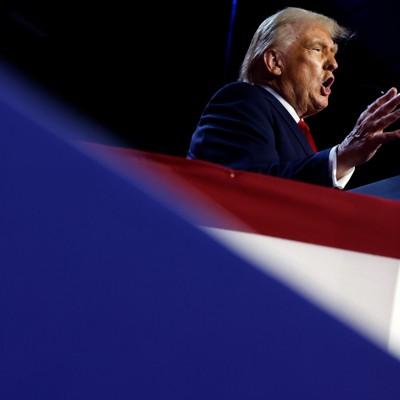A new administration, seeking to make its mark on federal operations and the workforce, takes a bold step early by ordering all agencies to pause their hiring of new jobs or filling vacant ones as part of a plan to rebuild the executive branch “starting from scratch.”
But it’s not 2025. Rather, it’s 2017, when the first Trump administration instituted a 79-day hiring freeze across the federal government ahead of an ambitious plan by then-Office of Management and Budget Director Mick Mulvaney to reorganize agencies to be more efficient and run with fewer employees.
“The government structure has never been rebuilt,” Mulvaney said at the time, “and this goes much deeper, to the very structure of government,” likening the move to “restructuring Washington, D.C.”
Much like the plans of the proposed Department of Government Efficiency, federal hiring freezes were hardly novel when the Trump administration unveiled its version. Presidents Carter and Reagan both instituted hiring freezes, with the former halting recruitment three times in a four-year term. However, the impact of the Trump freeze was felt in agencies long after it ended in April 2017, when Mulvaney issued a memorandum to agencies tasking them with developing short and long-term plans to cut their rolls.
“I did a search on [the Government Accountability Office’s] website over the past decade, searching under the term hiring freeze and it returned back to me 141 items,” said Jason Briefel, director of government & public affairs at Shaw Bransford & Roth P.C. and executive director of the Senior Executives Association. “What I’m seeing is a lot of programs and agencies with blinking lights a couple of years after that 2017 hiring freeze was imposed. So even though it only lasted [79 days] it does appear, at a high level, that it had a lasting impact on many agencies and programs.”
Ultimately, the GAO would raise concerns about the impacts of the freeze, highlighting it in a February 2017 House hearing on the agency’s high-risk list, where Comptroller General Gene Dodaro said past freezes weren’t effective and could exacerbate current workforce problems.
“We already have skills gaps in Social Security, cybersecurity, acquisition management, oil and gas management and nurses,” he said. “If you want to reduce the workforce, you have to reduce the functions they’re doing. And you have to be able to realign the workforce.”
And while the Trump administration did offer exemptions to the freeze for roles performing national security or public safety responsibilities, there were downstream effects to exempt roles at some agencies.
A March 2017 GAO report found that while the Veterans Health Administration exempted 108 positions from the freeze — including key roles like physician, registered nurse, physician assistant and others — but did not include human resources specialists, a role with an already high attrition rate that was responsible for recruiting other staff.
The report ultimately concluded that “a prolonged hiring freeze could further erode VHA’s capacity to provide needed HR functions.”
The State Department went further, extending its hiring freeze another 13 months as workforce numbers soon dwindled.
Much of the first Trump administration’s reorganization plans that emerged after the freeze would have required legislation and they ran headlong into congressional resistance. White House officials later refuted that the overall plans were intended to reduce federal workforce personnel.
Most agencies later said they had undertaken efforts to rebuild their workforces, but virtually all of them ended his administration with a smaller footprint than they maintained just before Trump took office.
“My hope is that the administration will have learned from some of their reorganization efforts,” said Robert Shea, CEO of consulting firm GovNavigators and a former OMB official in the George W. Bush administration. “GAO has a regimented way of looking at proposed reorganization, and during the first Trump term, Congress rejected a lot of those efforts on a bipartisan basis.”
Shea said a new Trump White House could apply those lessons to a new, more thoughtful reorganization plan or could lean on GOP majorities in the House and Senate to try and push those plans quickly into law.
Whatever the approach, a former Trump administration official involved in federal personnel policy said the signals from the president-elect’s team thus far would suggest another freeze may be in the works.
There will “probably [be] some sort of hiring freeze subject to exceptions by the White House,” the former official said. That person added that other administration officials eventually made clear after their initial months in office they were not interested in taking a “logical, rational approach” to reducing federal workforce rolls.
While the proposed DOGE, led by billionaire executive Elon Musk and former presidential candidate Vivek Ramaswamy, will offer what Trump called “advice and guidance” on reorganization efforts, David Berteau, president and CEO of the Professional Services Council, warned that it’s still early to predict policy plans, especially without nominees for key positions.
“How can we tell where it’s going? Look at the people who are nominated for those positions,” he said, particularly those not requiring Senate confirmation. “Policy is reflected by the people that are picked. I think people are policy.”
As far as the lessons a new Trump White House may have learned, Berteau said that depends on the unique challenge the administration faces of being the first in 130 years to be separated by a single term
“When it’s only four years between a party leaving and a party coming back, it’s easy to assume things are sort of the same,” he said. “Do the lessons learned still apply because the world is different? So you not only have to look at the lessons learned, but the application of those lessons Are you applying it to the same set of dynamics you had in 2017 or a different set of dynamics in 2025?”

